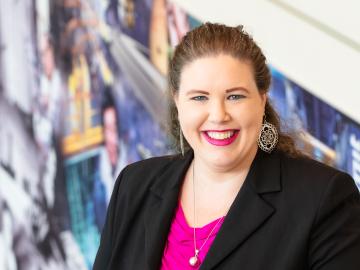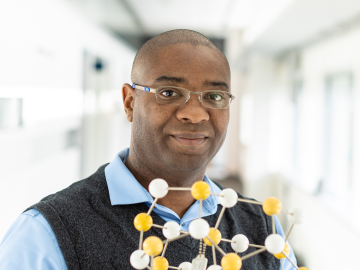
Filter News
Area of Research
- Advanced Manufacturing (5)
- Biology and Environment (23)
- Clean Energy (36)
- Climate and Environmental Systems (1)
- Computational Biology (1)
- Computational Engineering (2)
- Computer Science (5)
- Electricity and Smart Grid (1)
- Functional Materials for Energy (2)
- Fusion and Fission (9)
- Fusion Energy (6)
- Isotopes (3)
- Materials (54)
- Materials Characterization (2)
- Materials for Computing (11)
- Materials Under Extremes (1)
- Mathematics (1)
- National Security (5)
- Neutron Science (34)
- Nuclear Science and Technology (6)
- Supercomputing (21)
News Type
News Topics
- (-) Artificial Intelligence (21)
- (-) Biomedical (15)
- (-) Climate Change (29)
- (-) Fusion (17)
- (-) Machine Learning (13)
- (-) Materials (68)
- (-) Microscopy (20)
- (-) Neutron Science (41)
- (-) Security (4)
- (-) Summit (8)
- 3-D Printing/Advanced Manufacturing (49)
- Advanced Reactors (18)
- Big Data (21)
- Bioenergy (22)
- Biology (25)
- Biotechnology (3)
- Buildings (25)
- Chemical Sciences (24)
- Clean Water (13)
- Composites (13)
- Computer Science (57)
- Coronavirus (15)
- Critical Materials (13)
- Cybersecurity (9)
- Decarbonization (13)
- Energy Storage (48)
- Environment (58)
- Exascale Computing (4)
- Fossil Energy (1)
- Frontier (4)
- Grid (25)
- High-Performance Computing (23)
- Hydropower (6)
- Irradiation (3)
- Isotopes (14)
- ITER (4)
- Materials Science (54)
- Mathematics (2)
- Mercury (3)
- Molten Salt (6)
- Nanotechnology (24)
- National Security (10)
- Net Zero (3)
- Nuclear Energy (35)
- Partnerships (7)
- Physics (10)
- Polymers (14)
- Quantum Computing (6)
- Quantum Science (14)
- Simulation (12)
- Software (1)
- Space Exploration (11)
- Statistics (1)
- Sustainable Energy (55)
- Transformational Challenge Reactor (1)
- Transportation (47)
Media Contacts

When opportunity meets talent, great things happen. The laser comb developed at ORNL serves as such an example.

Stan David, retired scientist and Corporate Fellow Emeritus at the Department of Energy’s Oak Ridge National Laboratory, was awarded the Joining and Welding Science Award from the Joining and Welding Research Institute at Osaka University, Japan.

Rigoberto Advincula, a renowned scientist at ORNL and professor of Chemical and Biomolecular Engineering at the University of Tennessee, has won the Netzsch North American Thermal Analysis Society Fellows Award for 2023.

Nonfood, plant-based biofuels have potential as a green alternative to fossil fuels, but the enzymes required for production are too inefficient and costly to produce. However, new research is shining a light on enzymes from fungi that could make biofuels economically viable.

Anne Campbell, an R&D associate at ORNL, has been selected for an Emerging Professional award from ASTM International. ASTM, formerly the American Society for Testing and Materials, is an international standards organization that develops and publishes voluntary consensus technical standards for a wide range of materials, products, systems and services.

For decades, scientists sought a way to apply the outstanding analytical capabilities of neutrons to materials under pressures approaching those surrounding the Earth’s core.

Valentino “Tino” Cooper, a scientist at ORNL, has been appointed to DOE’s Basic Energy Sciences Advisory Committee for a three-year term. Cooper’s research elucidates the fundamental understanding of advanced materials for next-generation energy and information technologies.

Andrew Lupini, a scientist and inventor at ORNL, has been elected Fellow of the Microscopy Society of America.

Marm Dixit, a Weinberg Distinguished Staff Fellow at ORNL has received the 2023 Rosalind Franklin Young Investigator Award.

Warming a crystal of the mineral fresnoite, ORNL scientists discovered that excitations called phasons carried heat three times farther and faster than phonons, the excitations that usually carry heat through a material.


